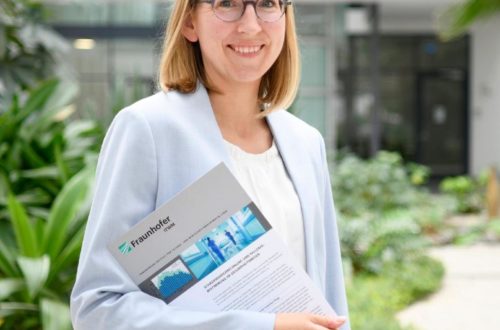Component Design: Competitive Advantage through Stress Analysis
Using proposed stress analysis, the available stress states in the components under loadings can be sorted and the volumes of the components under tension and compression can be taken into account. The decision on the necessary tests is taken depending on the relation of the tension and compression loaded volumes. This method leads to reliable component design with minimum experimental costs.
Tension/Compression Differences
Common engineering design is based on the HOOKE’s law. The tensile test has become generally accepted for the identification of material data. The tension / compression differences are often neglected in conventional solutions although most construction materials are stiffer in compression as in tension. The neglecting reason is that the additional compression tests cause extra costs.
Fraunhofer LBF have implemented the method to decide when, in addition to the tensile tests, the compression tests are necessarily required. On the basis of this decision, the simulation tools can be used in accordance with the material. The reliable design solutions for optimized structures can be achieved.
Stress Analysis
Proper stress analysis helps in optimizing component design. Fraunhofer LBF’s analysis is based on the sum of the normal stresses or the first invariant of the stress tensor. If this sum is less than zero, the corresponding volume of the component is compressed and vice versa. The next step is to compare tensile and compression loaded volumes.
Suggested stress analysis enables the choice of the appropriate material model. If the volume of the component under tension is significantly greater as under compression, the standard models without tension / compression differences can be used for design. This avoids further tests.
The application of the method is shown with the practical example of a cable clamp under relevant loading: Due to biplane symmetry, one fourth of the component is taken for analysis.
The volumes under tension and compression in the cable clip are identified in simulation. Plots are presented for the sign of first invariant. It is clear that the volume of the component under tension and compression are comparable. In this case, the effect of different material properties at tension and compression is considerable and should be taken into account. In addition to the tensile tests, the compression tests are highly recommended.
With this analysis, the Fraunhofer LBF supports numerous small and middle-sized entrepreneurs in their competitive. The experimental costs are adjusted to the usage of the component. Simple assignment of loaded components based on the first stress invariant delivers accurate information for utilization of material-specific properties.
Fraunhofer LBF in Darmstadt has stood for the safety and reliability of lightweight structures for more than 80 years. Today, with its expertise in the areas of structural durability, system reliability, vibration technology and polymer technology, the Institute provides solutions for three of the most important cross-cutting issues of the future: lightweight design, functional integration and cyberphysical mechanical engineering systems. The focus here is on solutions to social challenges such as resource efficiency and emission reduction as well as future mobility, like e-mobility and autonomous, networked driving. Comprehensive skills ranging from data acquisition in real operational field use to data analysis and data interpretation, in addition to deriving specific measures to design and improve material, component and system properties form the basis for this. Customers come from automotive and commercial vehicle construction, railway transport engineering, shipbuilding, aviation, machine and plant construction, power engineering, electrical engineering, medical engineering and the chemical industry. They benefit from the proven expertise of about 400 employees and cutting-edge technology accommodated in more than 17,900 square meters of laboratory and experimental space.
Fraunhofer Institut LBF
Bartningstr. 47
64289 Darmstadt
Telefon: +49 (6151) 705-287
http://www.fraunhofer.de
PR-Agency Solar Consulting GmbH
Telefon: +49 (761) 380968-27
E-Mail: steinchen@solar-consulting.de
Scientific contact
Telefon: +49 (6151) 705-8023
E-Mail: Vladimir.Kolupaev@lbf.fraunhofer.de
Scientific contact
Telefon: +49 (6151) 705-8761
E-Mail: axel.nierbauer@lbf.fraunhofer.de
Presse und Öffentlichkeitsarbeit
Telefon: +49 (6151) 705-268
Fax: +49 (6151) 705-214
E-Mail: anke.zeidler-finsel@lbf.fraunhofer.de
![]()



